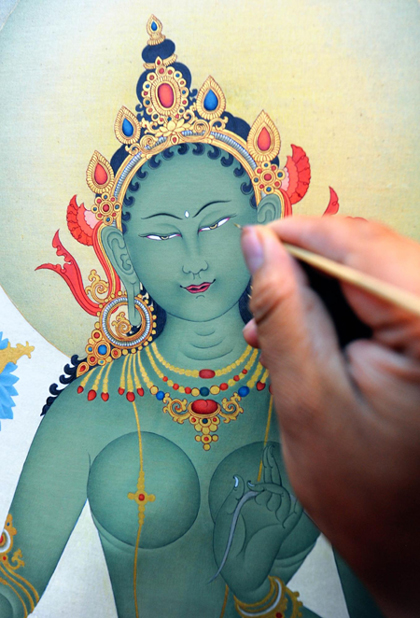-
News >Regional
Tibet selects top Thangka painters
2010-08-06 16:13LHASA - Twenty Tibetan artists have been named as China's top painters of Thangka, a kind of Tibetan scroll painting featuring Buddhist themes.

An artist paints a Thangka in Tibet on August 6,2010. [Photo/Xinhua]
The laureates were chosen from 50 professional Thangka painters who gathered in Lhasa this week for the ongoing Thangka Art Expo.
Dondrup, 27, is one of the three top prize winners.
"I was unprepared for the honor," he said. "As a young painter, I'm here to learn from other artists."
All the artists' works were painted at the scene during the Art Expo. "They are among Tibet's best painters and I've learned a lot from them," said Dondrup, who started learning Thangka at the age of 13.
Dondrup said the Expo was a good opportunity for artists to exchange techniques. "It's inspiring, too, I hope I can come back next year with better works."
Six artists were awarded second prize and 11 received third prize."It's such a delight that the centuries-old art has so many young followers," said Ngawang Jigme, deputy dean of Tibet University's Tibetan art institute and a member of the evaluation panel.
Thangka is painted with mineral and organic pigments derived from such materials as coral, agate, sapphire, pearl and gold so the color stays for centuries.
Thangka is a Buddhist art form and often serves as an object of worship at home. It's also the ideal souvenir for tourists to Tibet.
Besides the Tibetans, many avid painters from other ethnic groups are studying Thangka painting, with the hope of using the sacred art to make a good living given the growing tourism industry on the plateau.
Tibet University began recruiting Thangka majors in 1985. In 2000, it recruited China's first graduate student concentrating on the Tibetan art.
Today, two of the four schools of Thangka have been listed as China's Intangible Cultural Heritage and receive special funds from the central government each year for their conservation work.
Related News:
